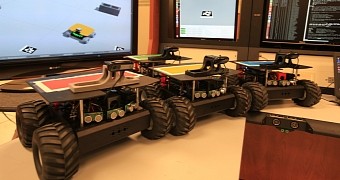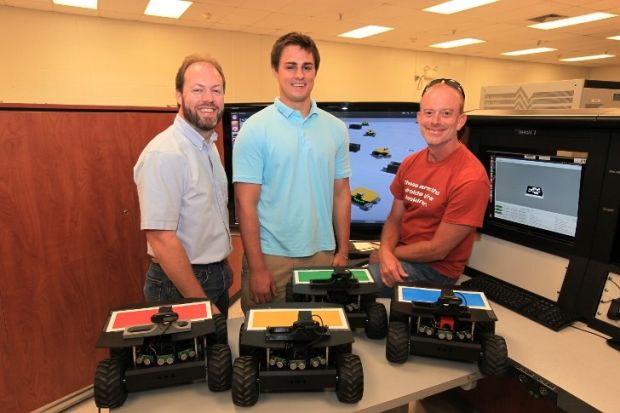GPS technology won't be much use on other planets, but until NASA figures out how and when to send the Swarmies off-world, some other sort of automated guidance system should be figured out.
You may have already heard or read about the swarmies robots from NASA. We actually wrote about them already, but there's more to the things than Ubuntu Linux.
What are the robots, you may ask? Why, they are experimental vehicles, of sorts, which NASA is using to patrol the surrounding area of its space center in Florida, USA.
The reason NASA calls them “swarmies” is because they can act much like a swarm, thanks to the built-in Wi-Fi technology they possess, which allows them to interlink wirelessly.
The robots also have a webcam, which allows them to transmit video back to NASA and to sync views with other robots.
Ultimately, NASA wanted to create a robot that could individually survey an area, but also collaborate with others if it came down to it.
For example, a swarmie would go alone to scout some place or other, and signal the others to come rolling in once it found something of interest.
At that point, they would divide tasks between themselves. One swarmie robot would collect the material, others would look around for other samples or related objects of relevance, some would go explore the nooks and crannies others may have missed, etc.
In the end, the whole group would go back to the base, or whatever their starting point was, and wait for new instructions.
Tests so far have consisted of sending the robots looking for barcoded pieces of paper. Obviously, this won't pay any dividends on the surface of the moon or some lost asteroid in space, but the process should easily enough be adapted to look for other things. You know, like water, fuel, resources of other kinds, etc.
The algorithms still need to go through some computer tests though, especially since researchers want to enable larger networks of virtual robots without having to actually build the things. Many simulations will be run over the next year.
Once the swarmies are complete, however, they are expected to more easily map the surfaces of celestial objects, compared to large and mobility-challenged rovers like the Curiosity currently on Mars.
As for other uses, the swarmies will do well in inspecting water pipes and aiding search and rescue efforts.

 14 DAY TRIAL //
14 DAY TRIAL // 

